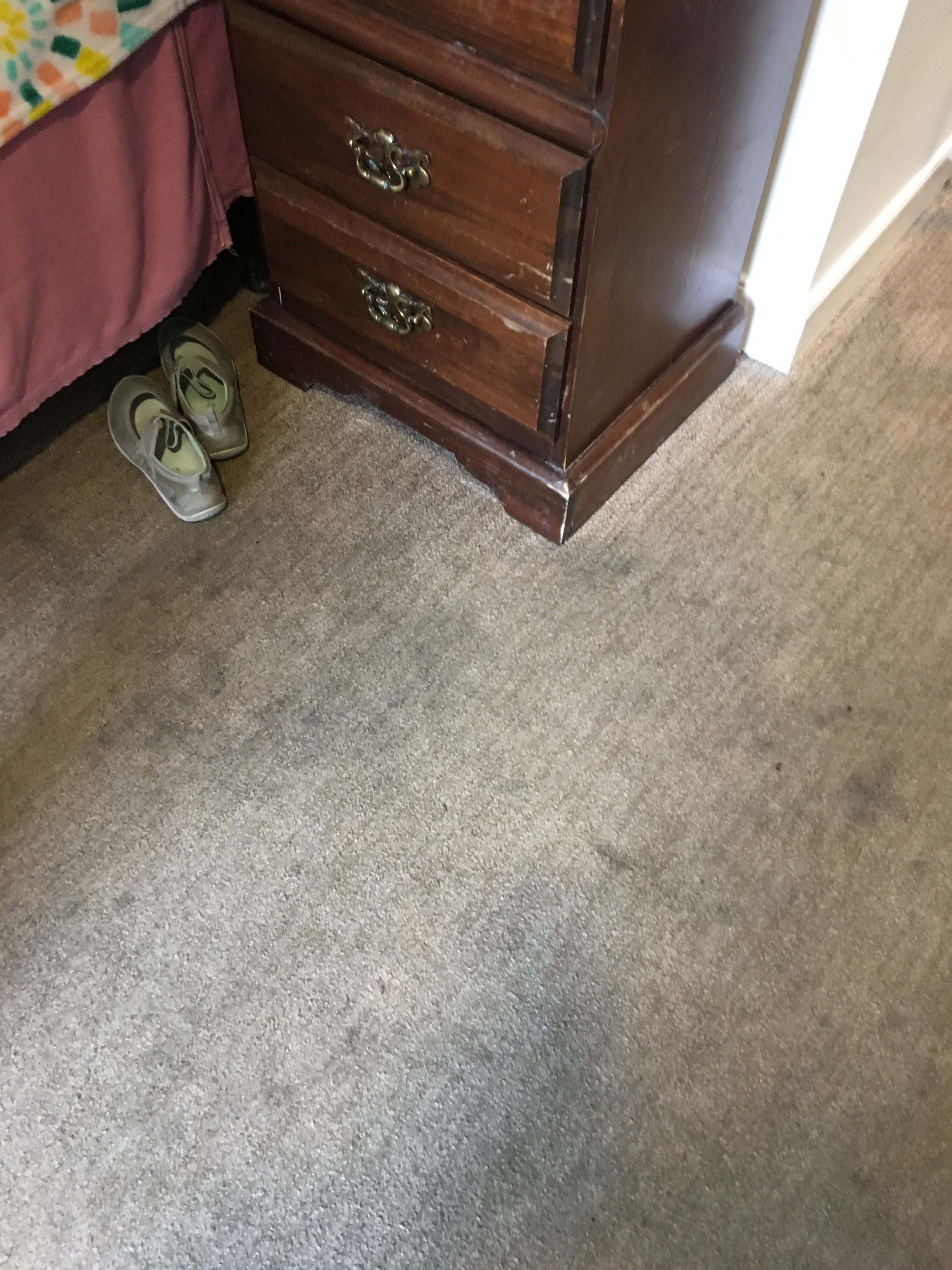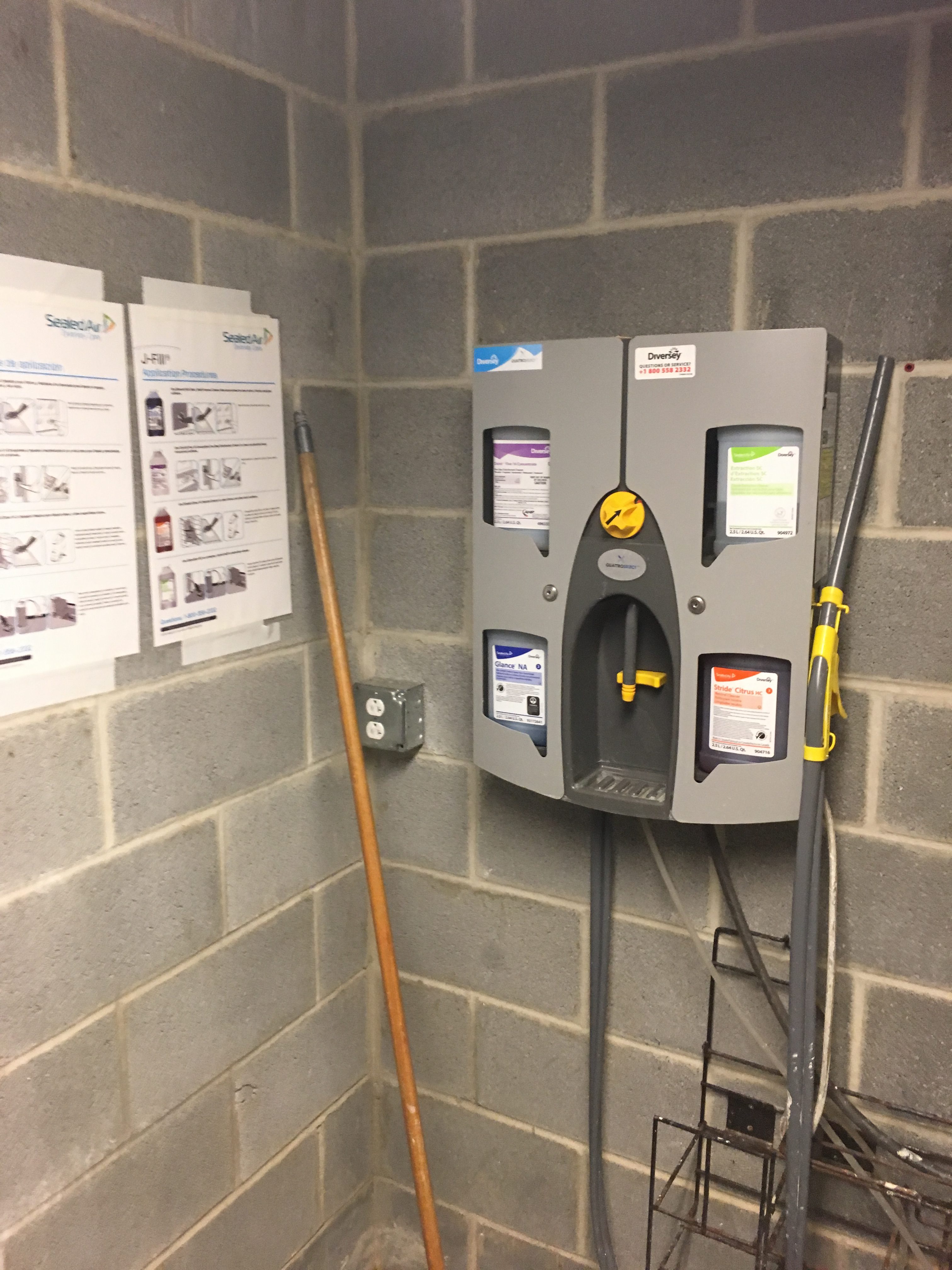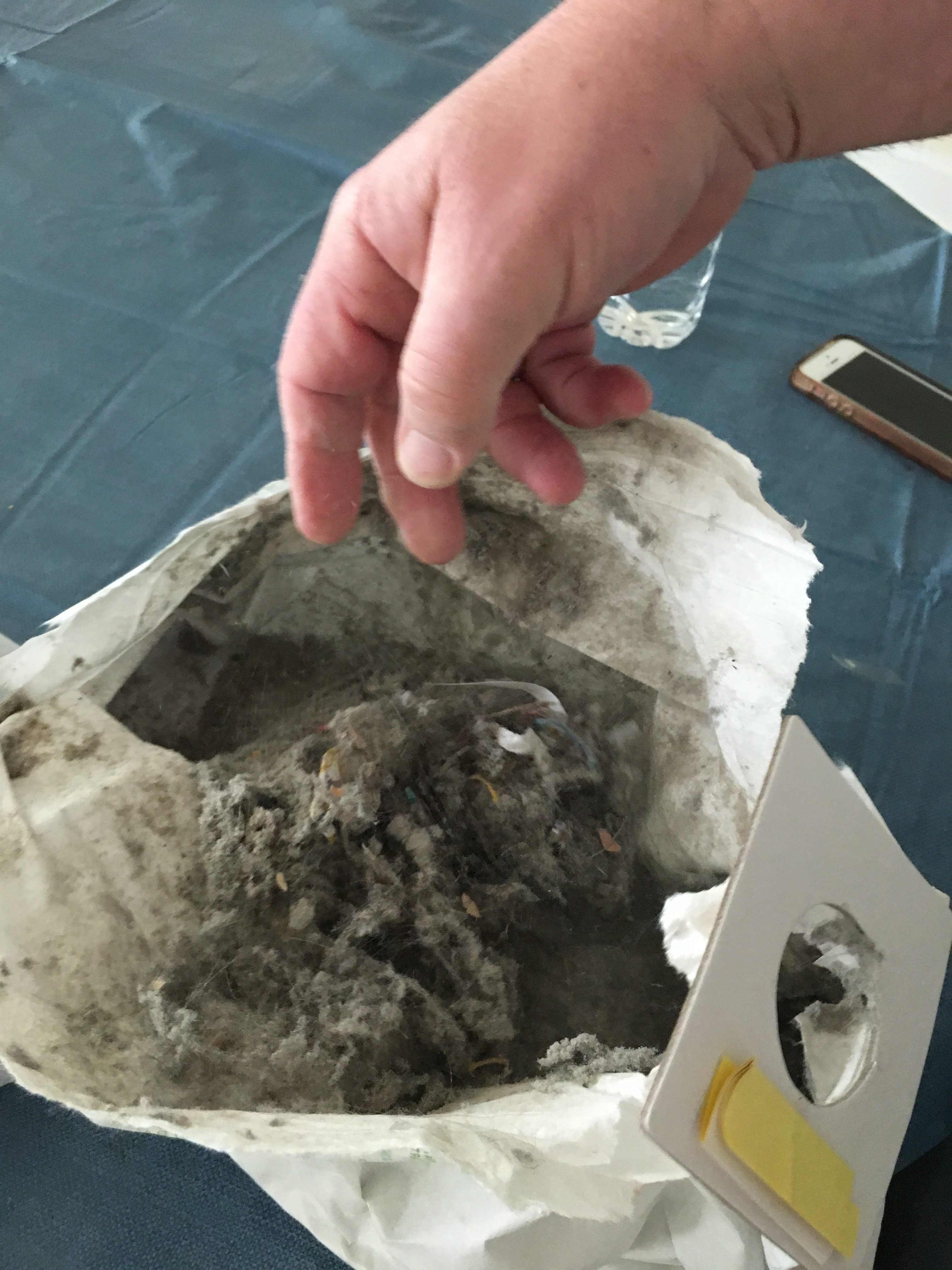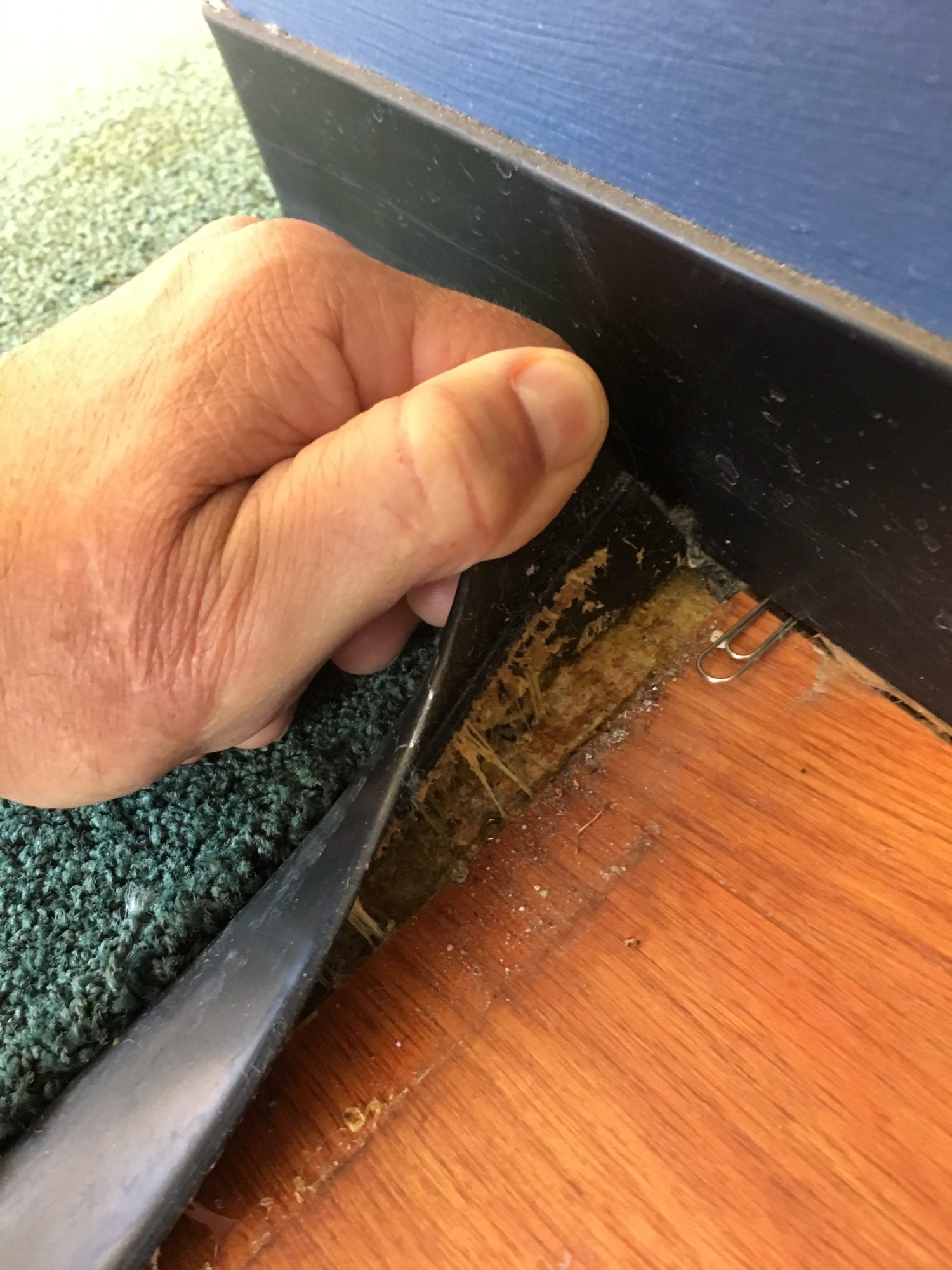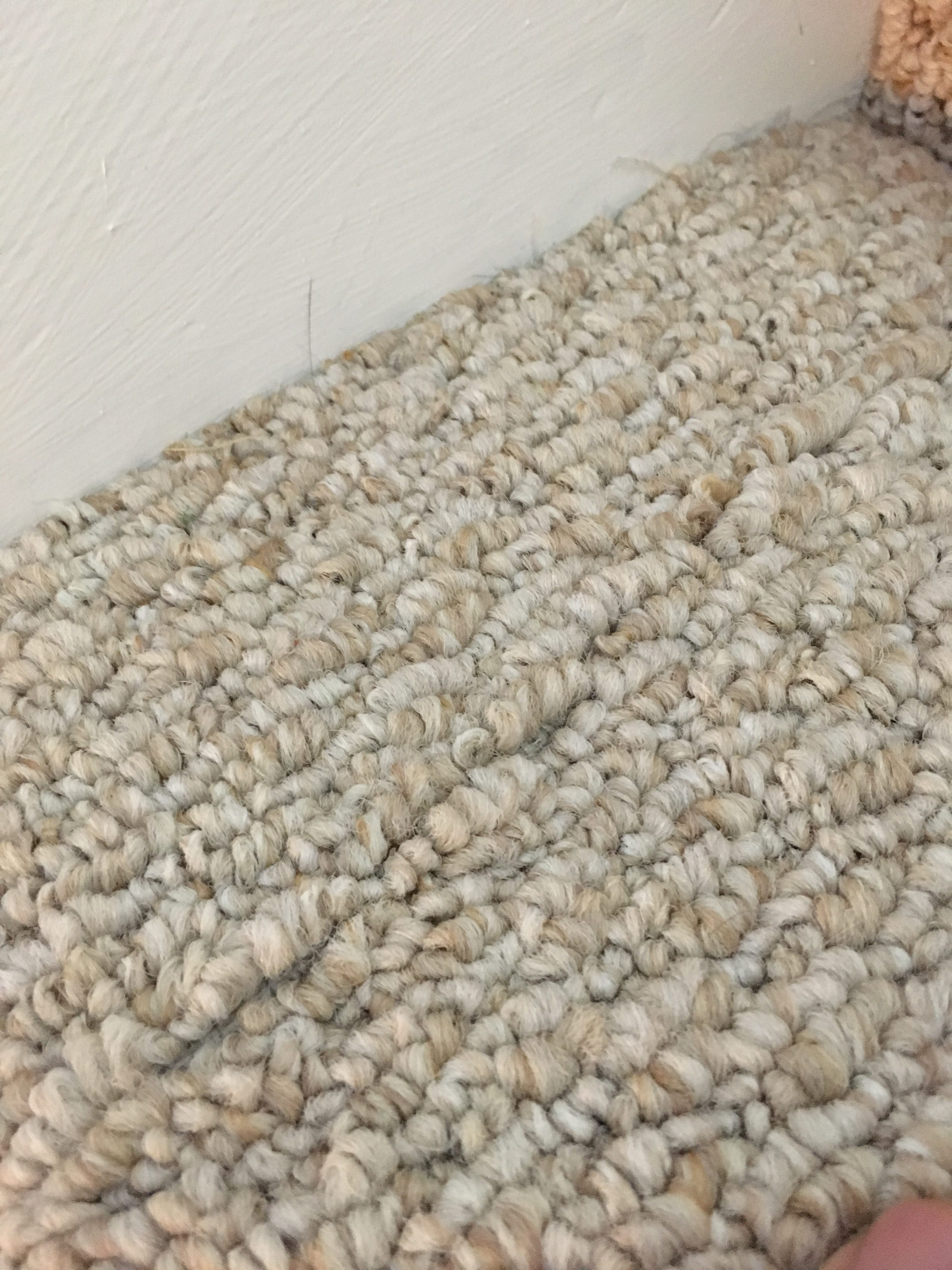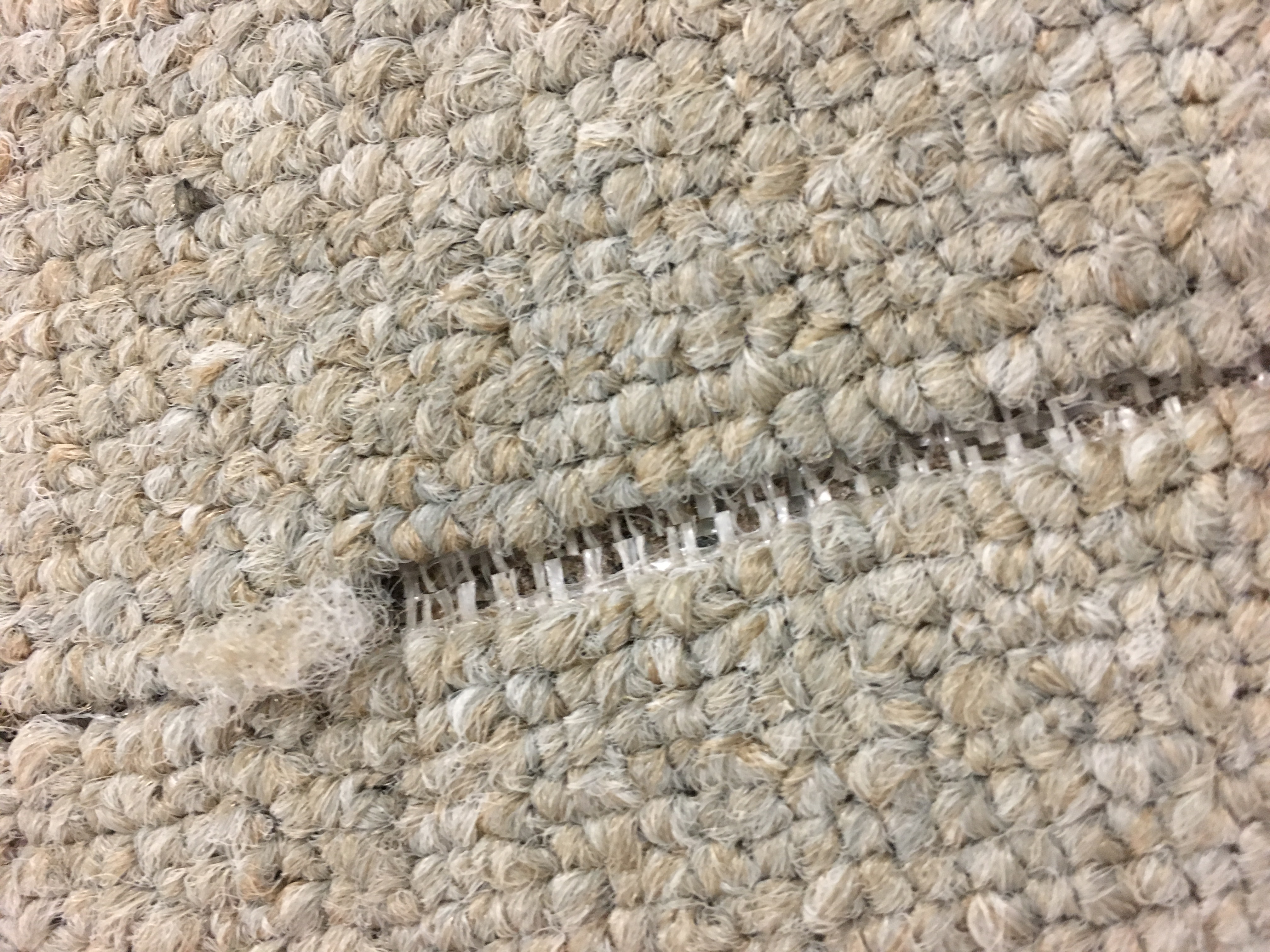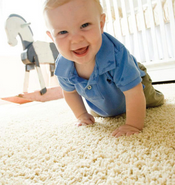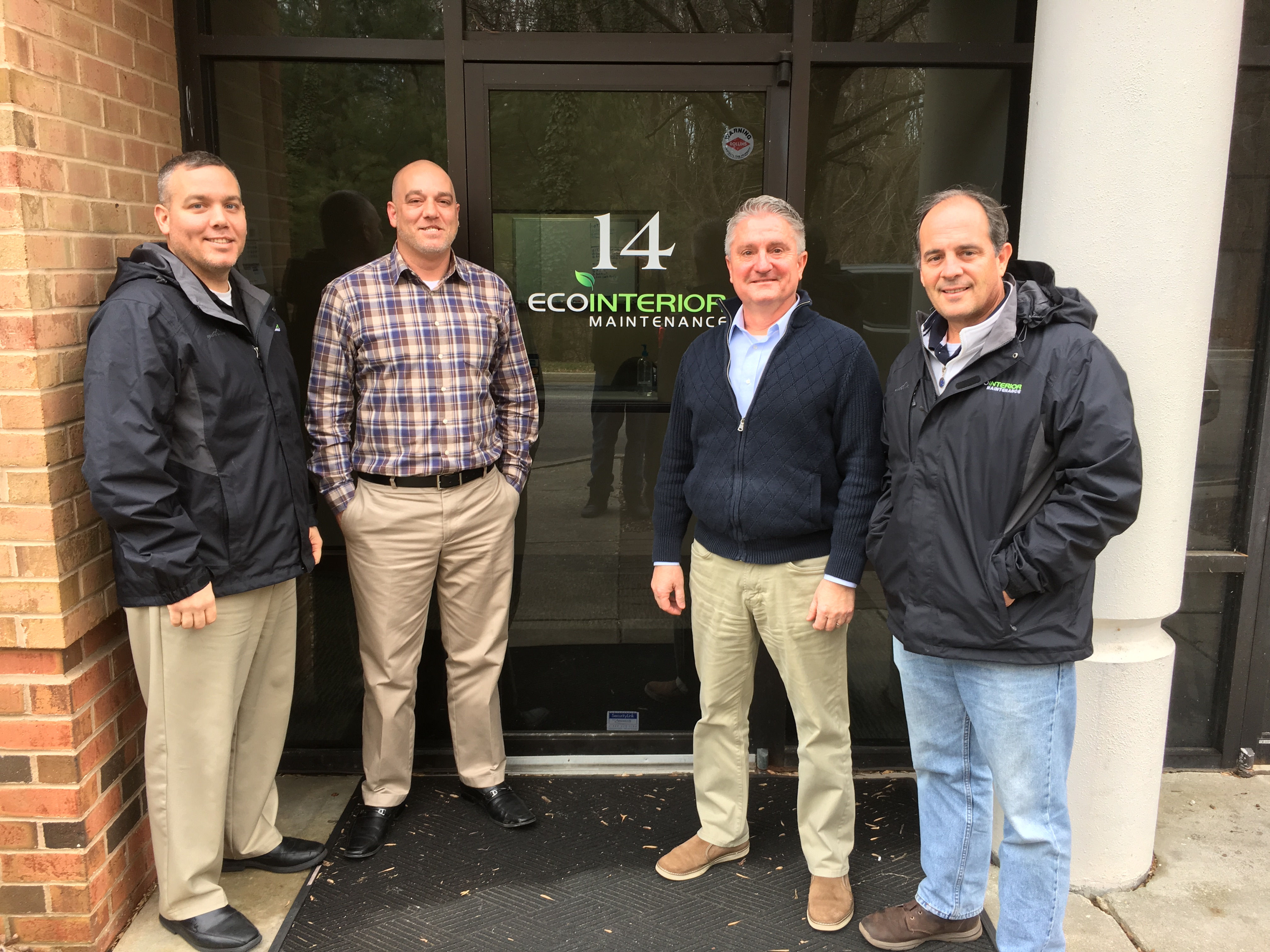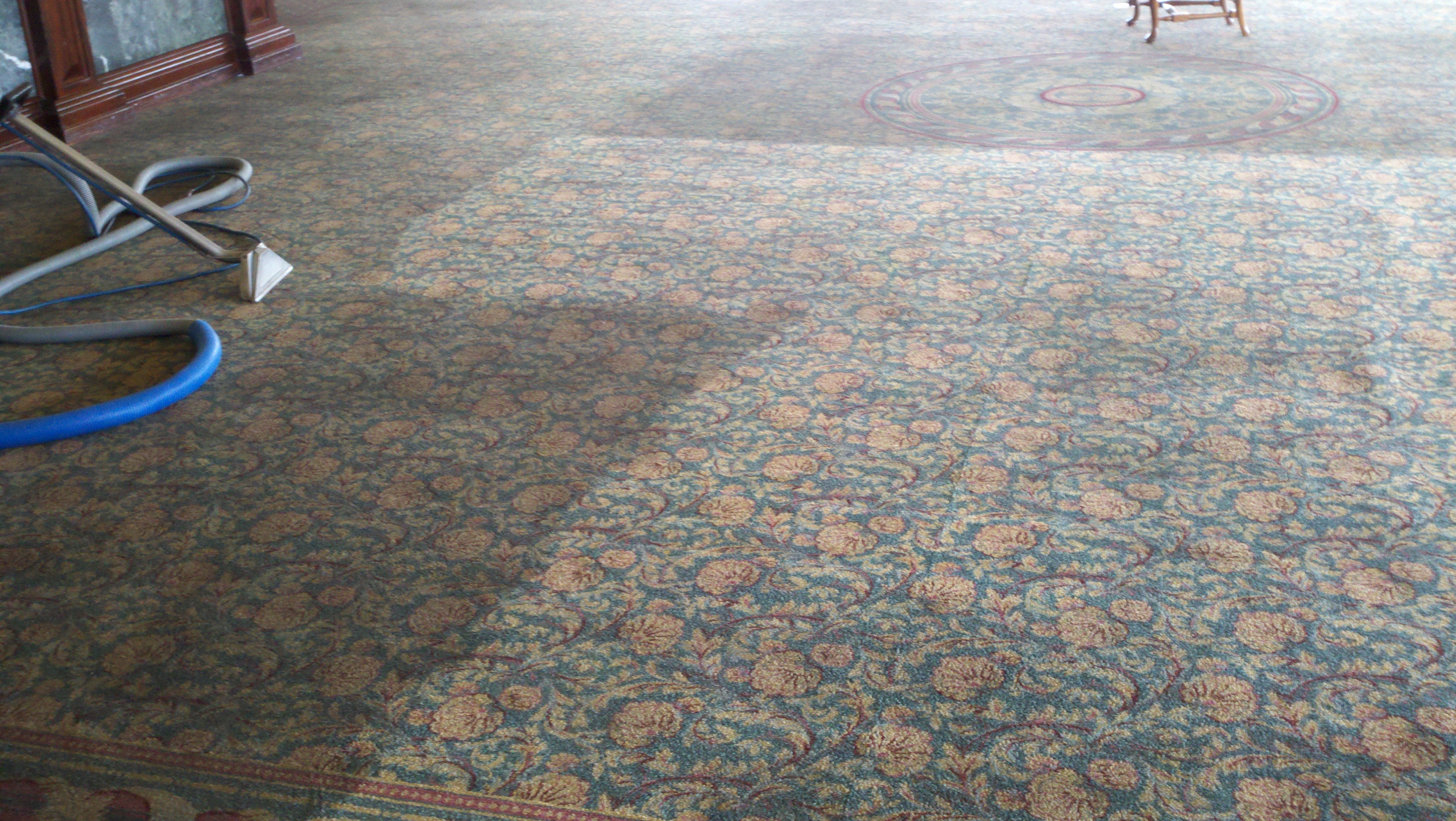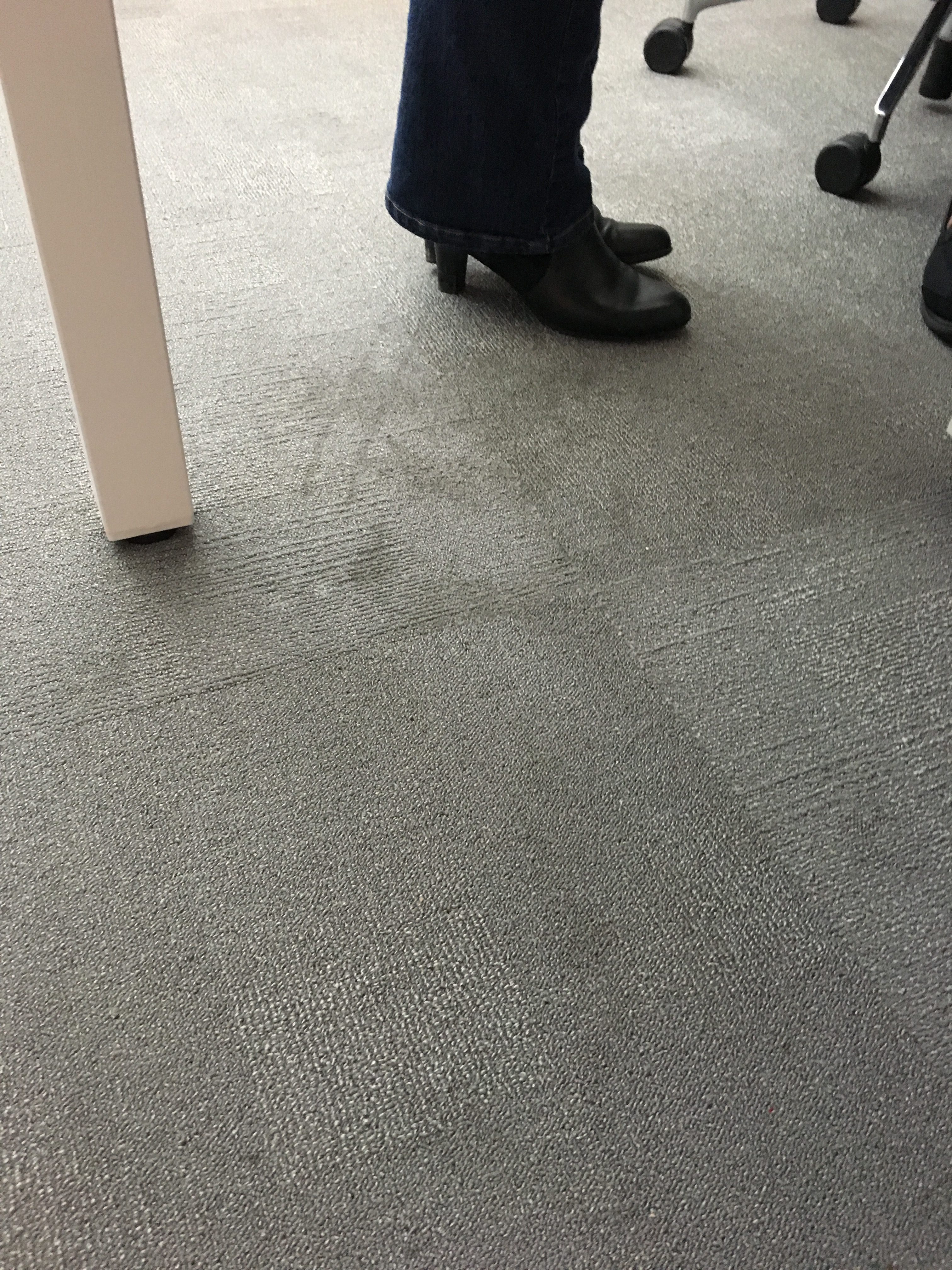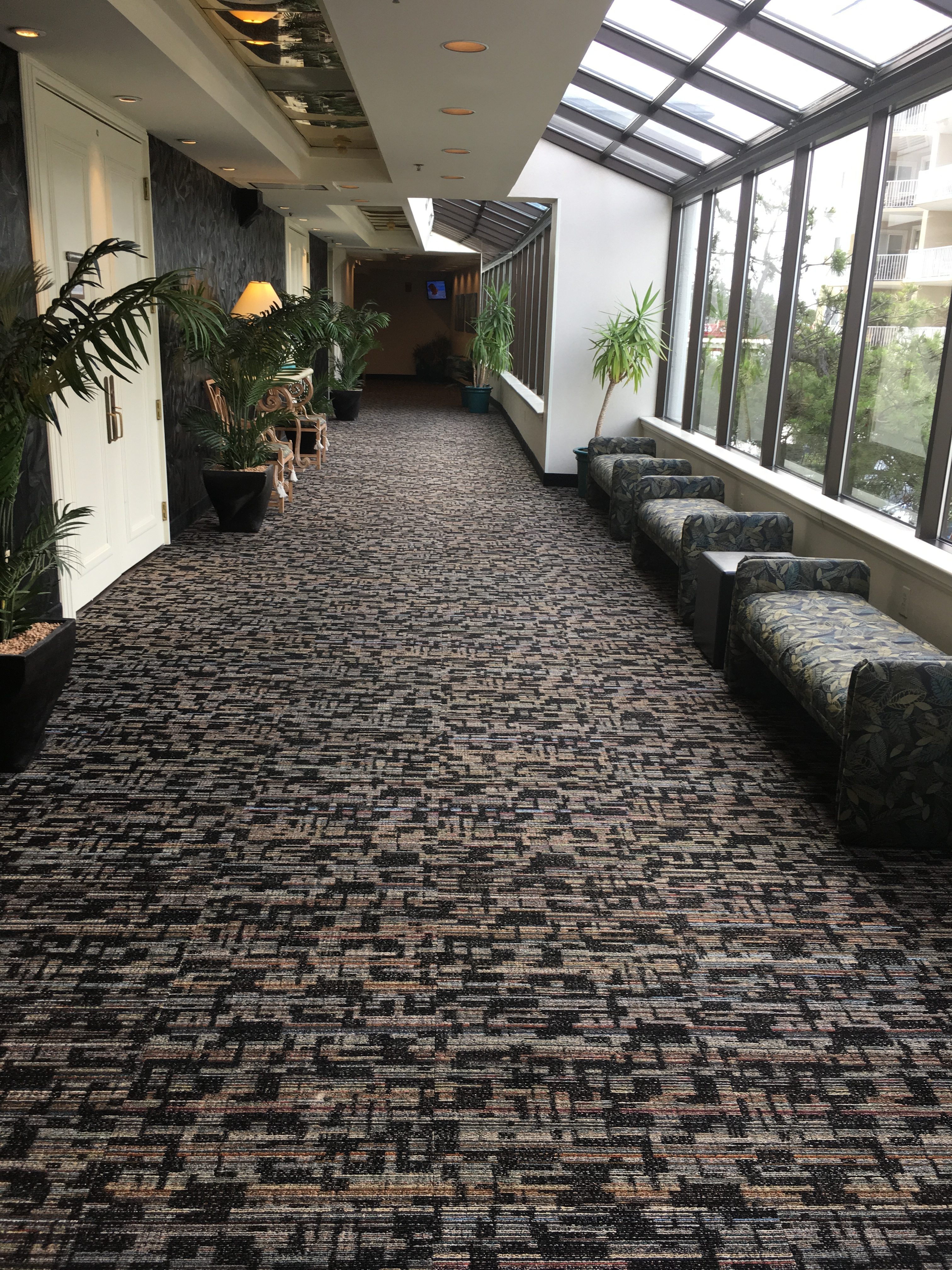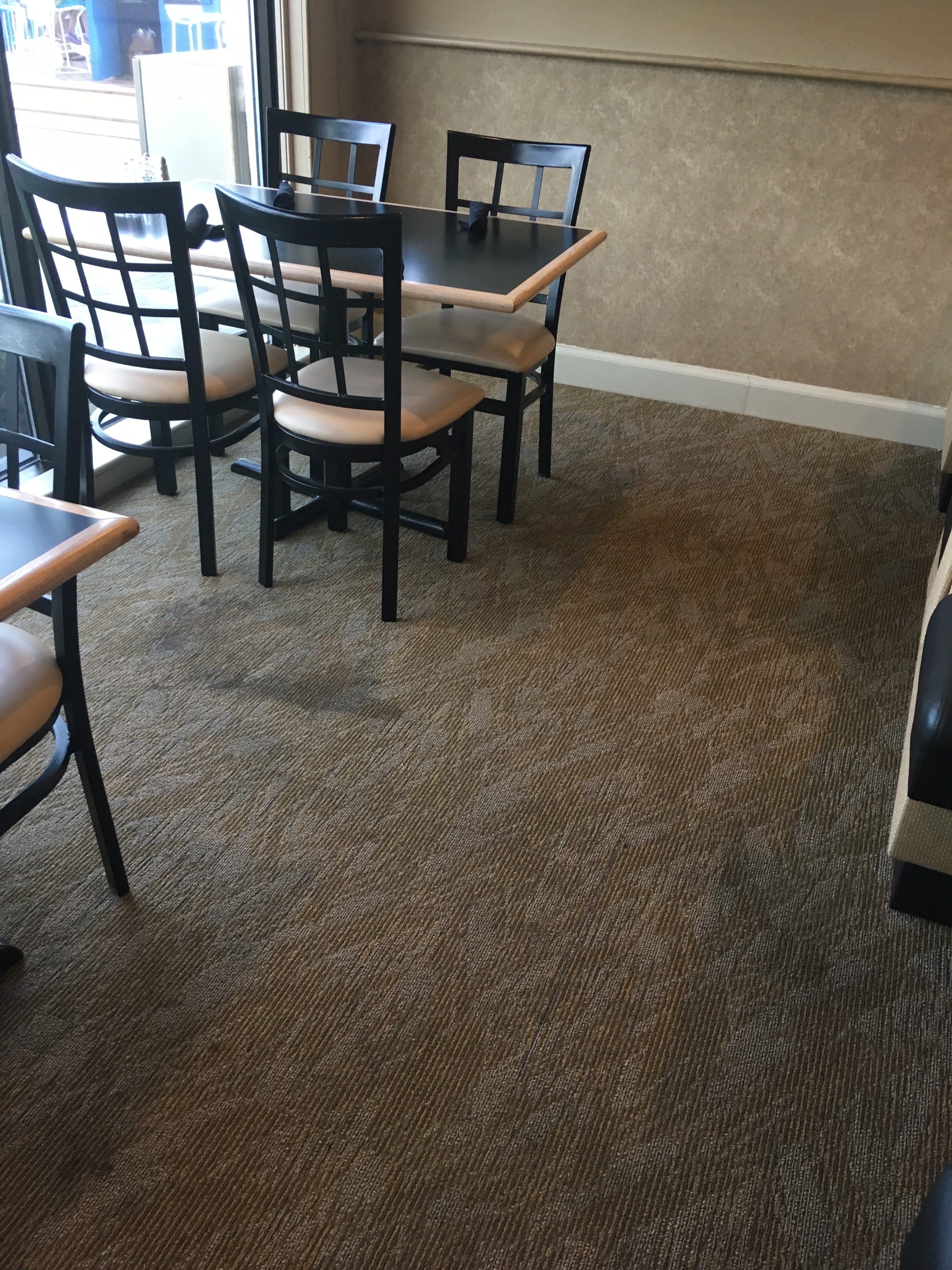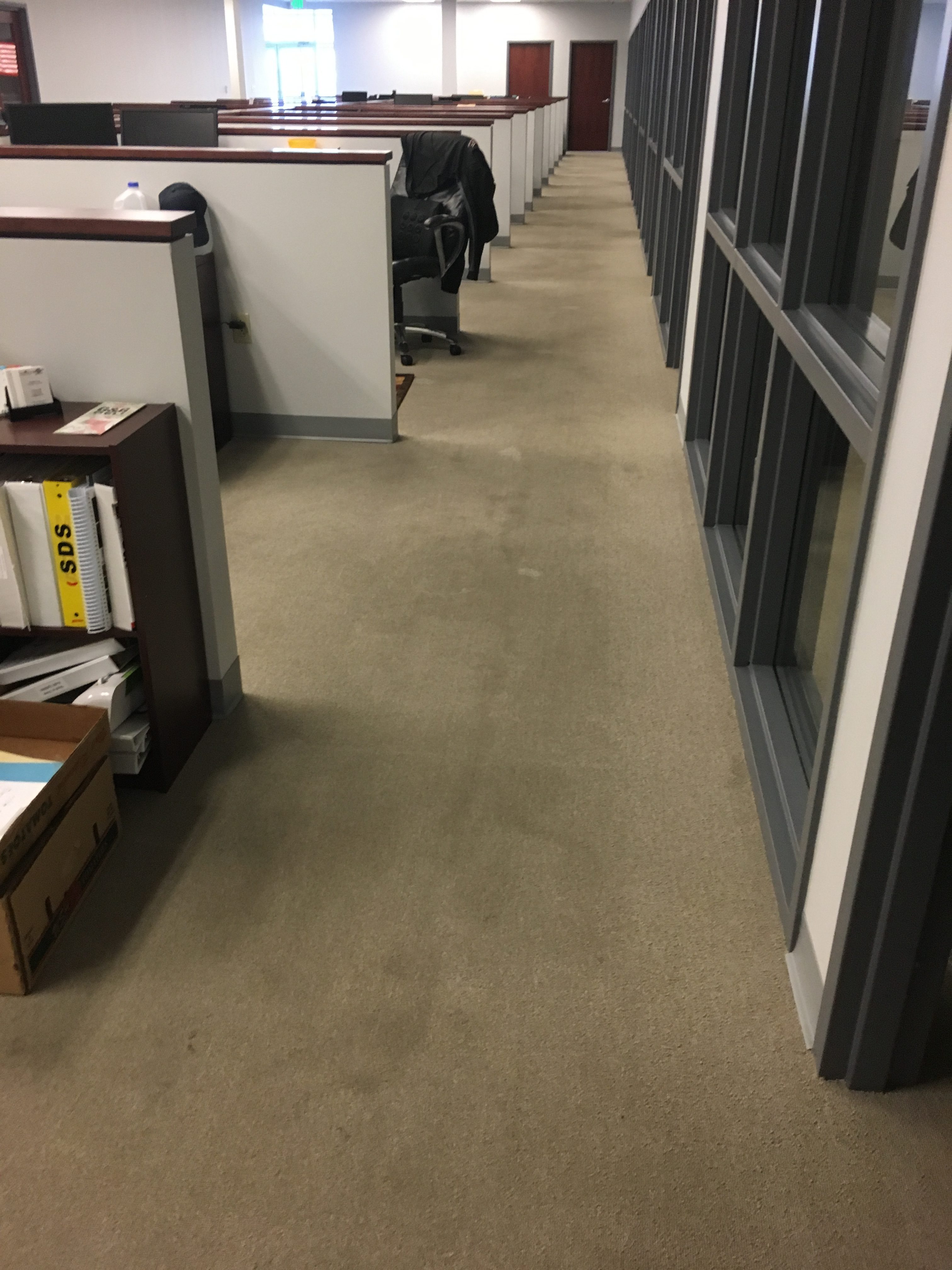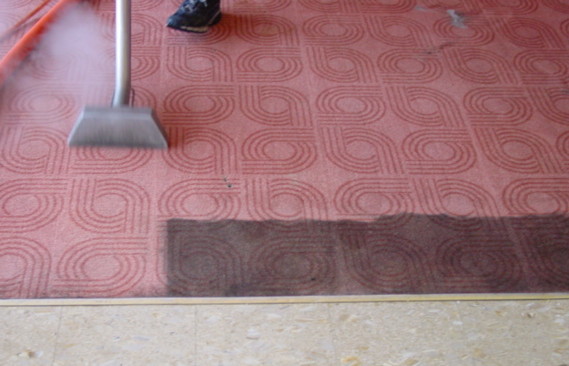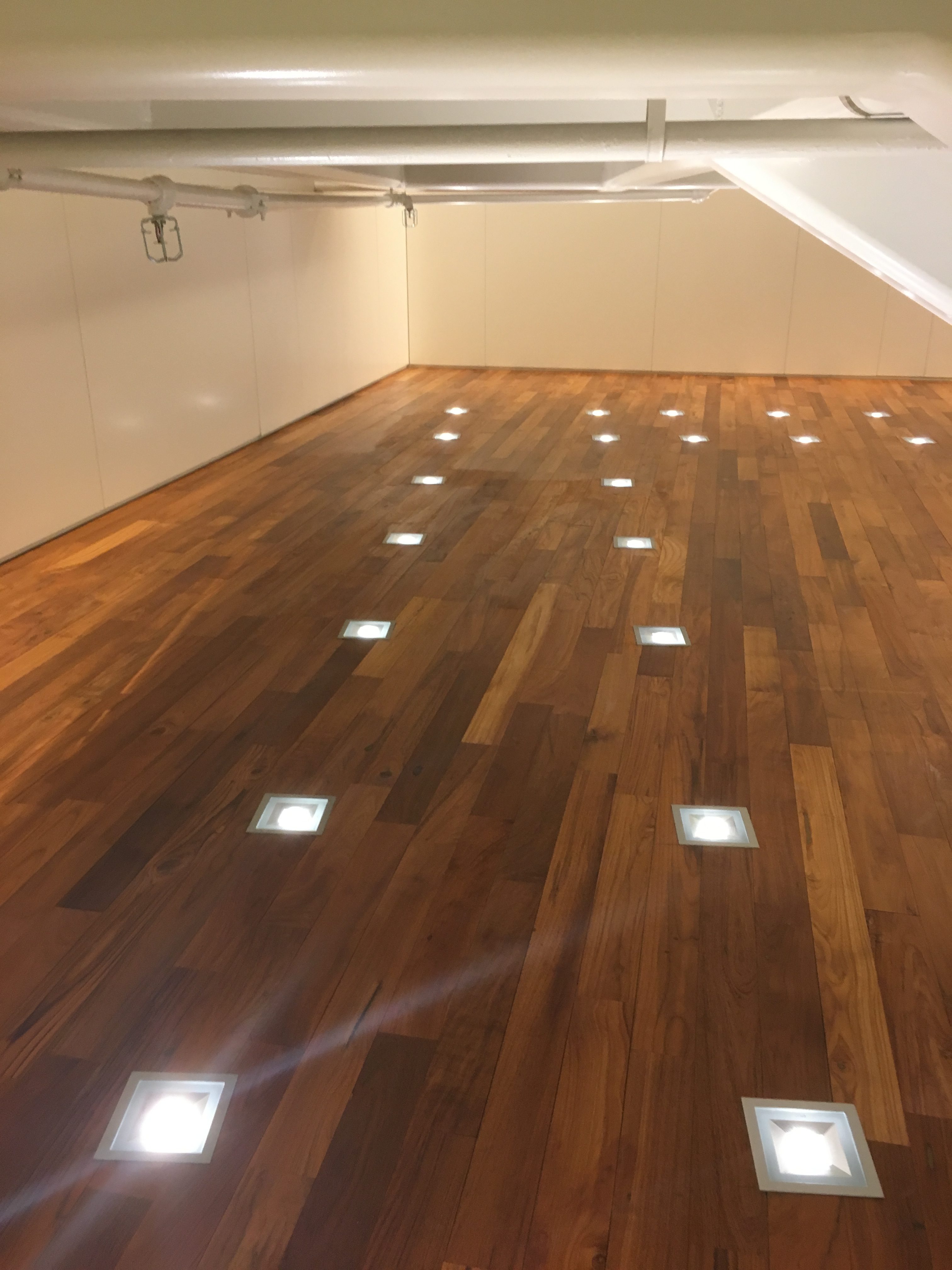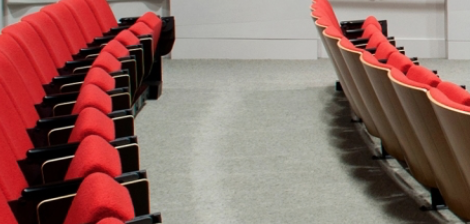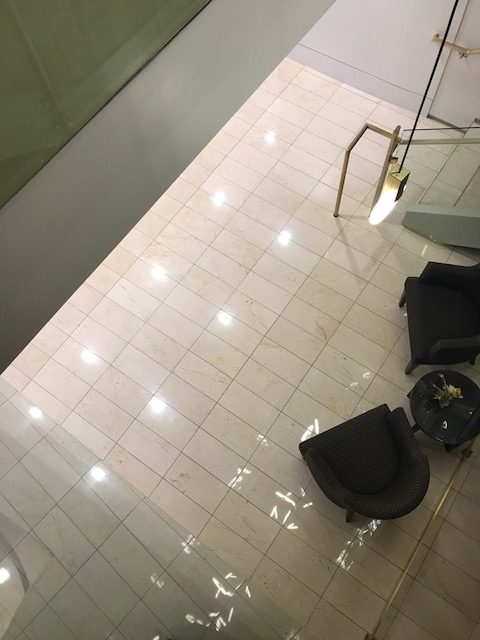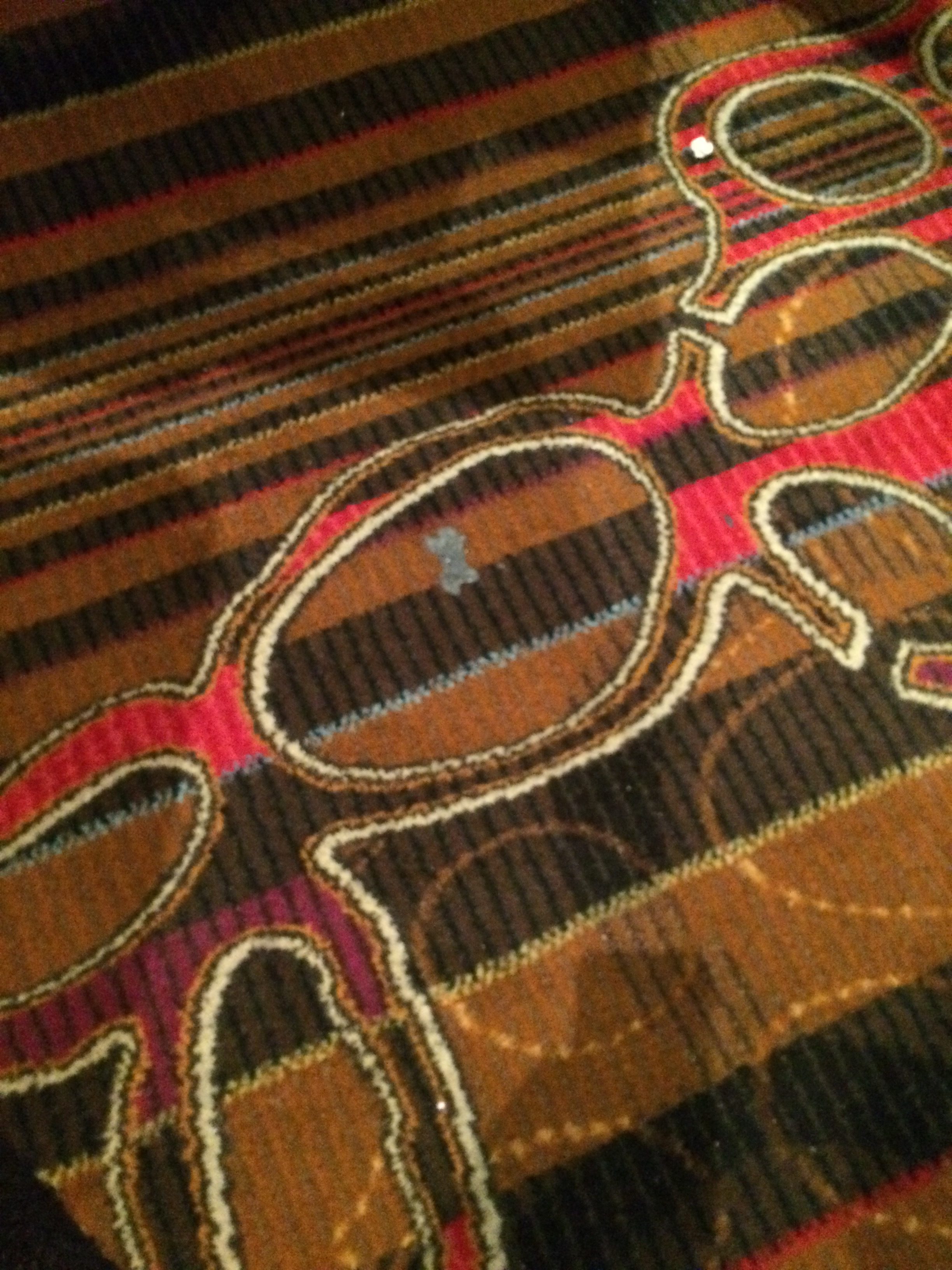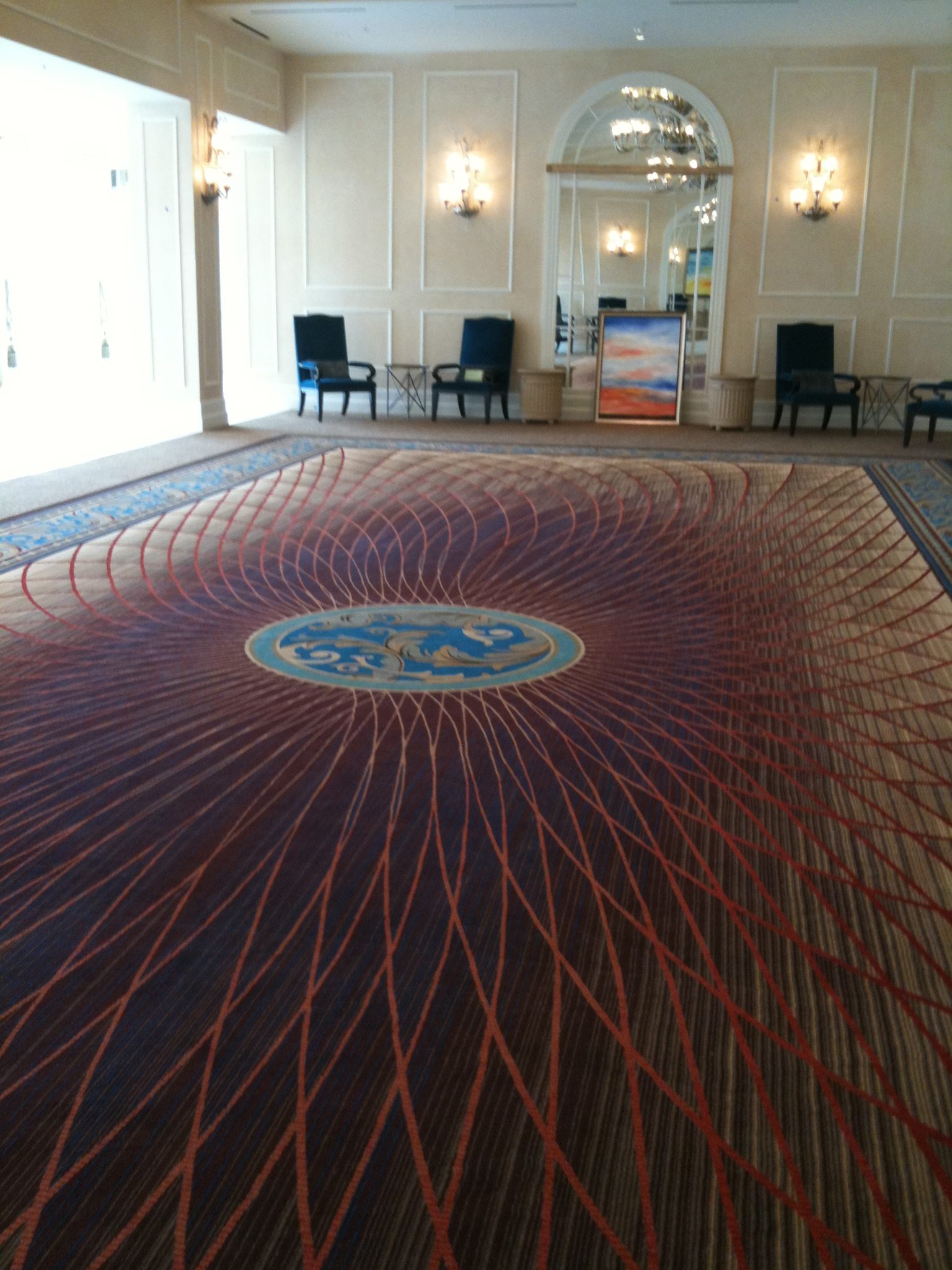So how did ripples, waves or buckling carpet appear at your home or office?
Carpet ripples, waves and buckling typically are associated with a stretch-in installations over pad. The main reasons they appear are:
- Installer does not use a power stretcher during installation. (uses only knee kicker)

- Carpet was not acclimated in the home or commercial facility before installation
- Carpet has padding/cushion that was not installed properly or is the wrong specification
- Tack strip/threshold failure because of installation or tack strip specification
- Secondary backing latex failure (manufacture related)
- Heavy objects rolling or pushed over carpet and pad.
- Improper glue use or application (Double glue/direct glue down installations only)
Power Stretcher
A power stretcher is a required tool needed to install a broadloom carpet (12-15 foot wide and comes in a roll). Carpet will on an average stretch 1.5 inches per 12 ft. length. Some installers may be able to get this using a knee kicker however the Carpet and Rug Institute Installation Guidelines require the mandatory use of a power stretcher. 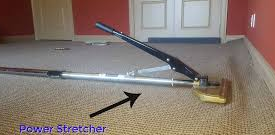 Often ripples will appear over time if carpet is not stretched in place, drum tight, during the initial installation. If ripples, waves or buckling appears it can cause delamination of the primary and secondary backing, dimensional stability issues or the necessity to re-stretch the carpet again at a later time.
Often ripples will appear over time if carpet is not stretched in place, drum tight, during the initial installation. If ripples, waves or buckling appears it can cause delamination of the primary and secondary backing, dimensional stability issues or the necessity to re-stretch the carpet again at a later time.
Carpet Acclimation
According to 9.0 of the commercial & residential CRI 104/105 guidelines, “It is recommended that carpet and installation materials be allowed to acclimate in the installation area for a minimum of 24 hours at a temperature of 65-95oF (18-35oC). Carpet must be adequately protected from soil, dust, moisture and other contaminants. Follow manufacturer’s instructions for acclimation.” This can often be a problem if the carpet is being installed on a really humid day or if it is raining and carpet sits in truck most of day before installation or carpet is cut on driveway then installed.
Carpet padding
If the carpet is too thick, not dense enough or is not installed properly (at least 6 inch offset from carpet seams) carpet ripples, carpet waves or carpet buckles can appear. This again is typically an installation issue. Try to get padding that has at least an 8 lb density and no more than 3/8 inch thick.
Tack-Strip/Transition strips
Tack-strip/Transition strips come in several different shapes and sizes. Some is made for installation over concrete and some for wood. Some is thicker than others. Some accounts for step down levels. An inadequate installation of tack-strip could cause carpet to come loose creating a carpet conducive to rippling, waves or buckling.
Secondary Backing, Heavy Objects or Double glue
There are multiple other ways that ripples, waves or buckling carpet can occur. Most of them are related to installation but occasionally there is not enough latex on the back of the carpet, someone has pushed heavy objects over the carpet or there are glue failures between primary, secondary or double glue down installations.
Fixing Ripples, Waves and Buckling carpet
Fixing carpet ripples, carpet waves or carpet buckling can sometimes be difficult when heavy furniture, polls, vents and corners are in the way. In most cases a professional installer or a repair specialist can fix carpet ripples if they are caught soon enough. Commercial double glue down installations that ripple are not typically fixable. Cost can range from $75 hr to -$300 hr. **Always take pictures and report back to the retailer if you see ripples within the fist year after installation.
Call 410-647-2800 or email Eco Interior Maintenance for more information. helpdesk@ecointeriormaintenance.com
-published by Doug Bradford CEO, LEED AP, SCI
Doug Bradford is one of the founders of Eco Interior Maintenance (DC, N. VA, MD) and Strategic Restoration & Maintenance (Central Florida). With over 30 years experience, some of his accreditation include: USGBC LEED AP, Chairing for 10 years the writing of the ANSI IICRC S100 International Textile Floor Covering Cleaning Standard, Content contributor for the Carpet & Rug Institute, RIA CR, Senior Carpet Inspector, Resilient Inspector and Mold Remediation Technician. He has developed cleaning products that clean, disinfect and protect textiles and hard surfaces for the cleaning industry, has been an instructor, an industry speaker, industry consultant to major corporations & textile manufacturers and has published articles in nationally recognized cleaning magazines.

